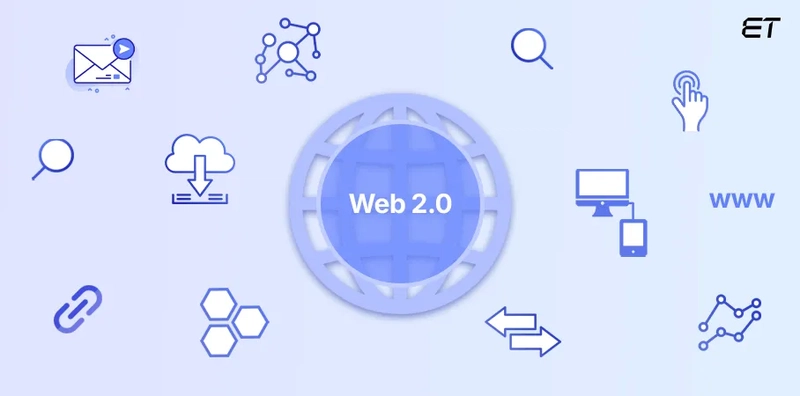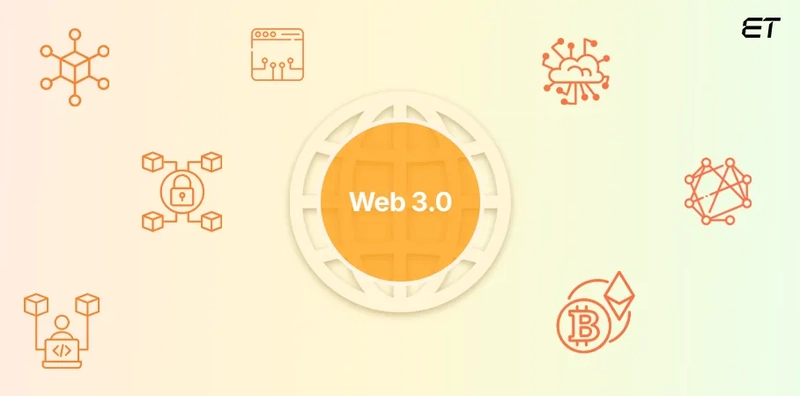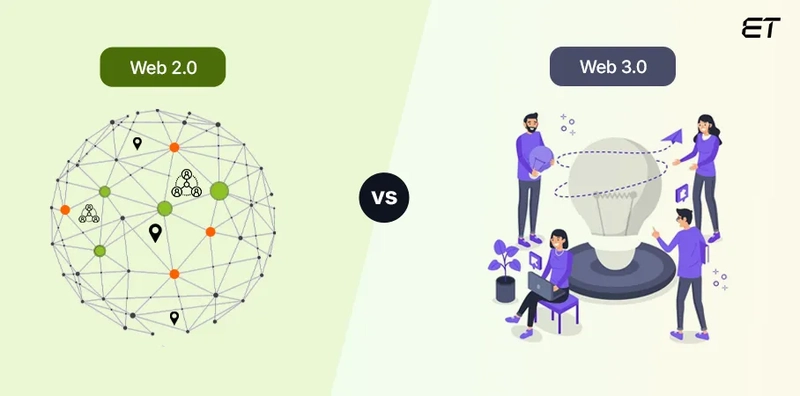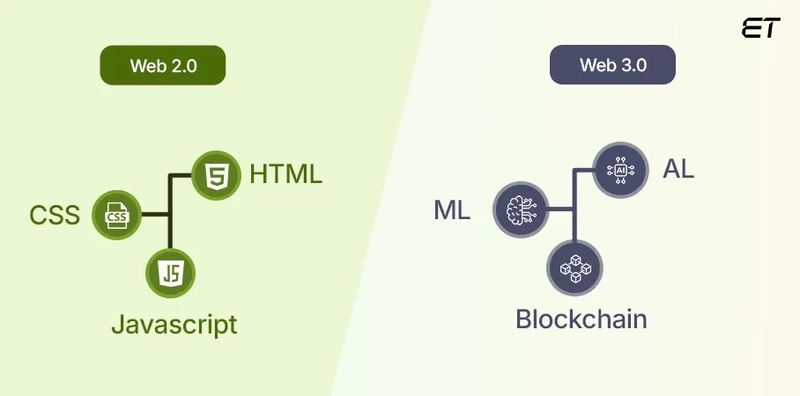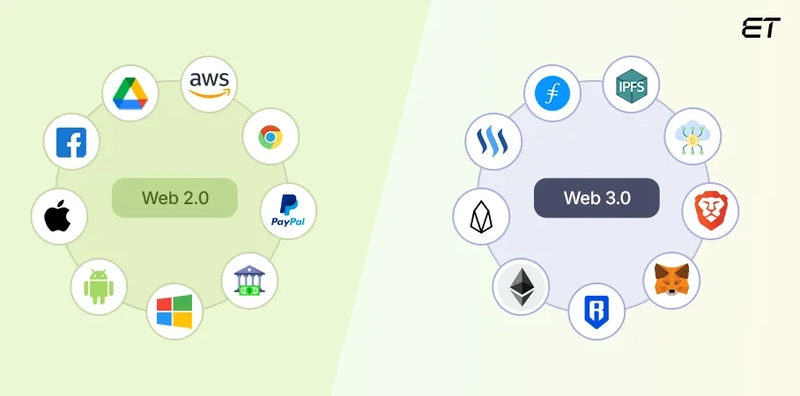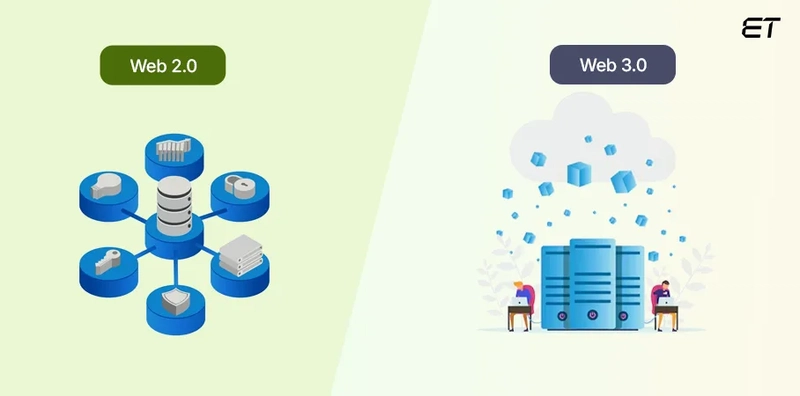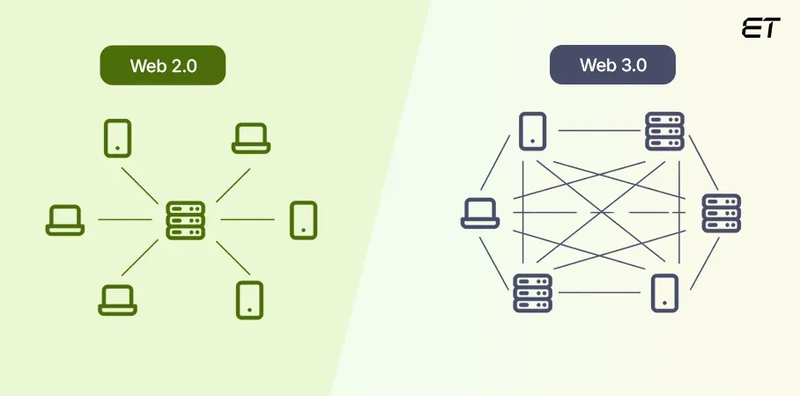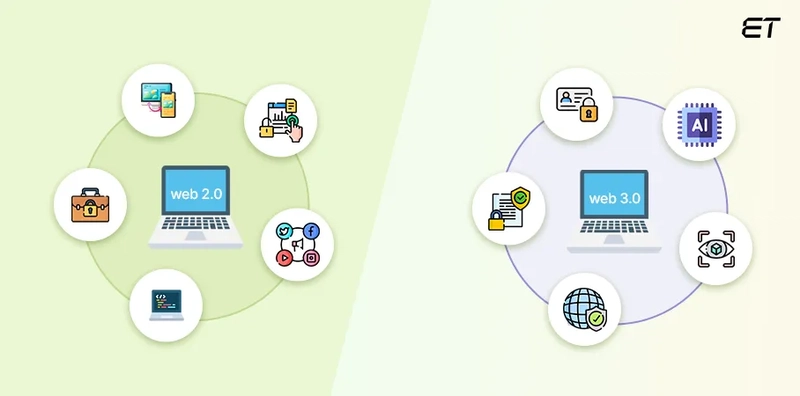`The title, Web 2.0 vs Web 3.0, reveals a lot, isn’t it? It lays down the direct comparison between two distinct generations of the internet. Notably, it depicts that we will no longer witness similar aspects of the online world going ahead.
In 2004, O’Reilly Media popularized Web 2.0. Since then, we have all been striving to capture the essence of Web2, i.e., user-generated content. However, with Web3, decentralization has become pivotal. You need to pay attention to certain nuances and plan your digital activities to sustain in the Web 3.0 era.
In this blog, you will get a simplified understanding of Web 2.0 vs 3.0. We will explain both concepts and provide information to help plan your online digital transformation strategies. So, without any ado, let’s move ahead.
AI is an essential aspect of Web 3.0. We have dedicated AI consultants that can help plan your next-gen initiatives.
What is Web 2.0?
In simple words, Web 2.0 is the participative era of the World Wide Web. In this generation, websites focus on the following aspects:
- User-generated content (blogs, social media posts, videos, and more)
- Social media interaction (engagements, collaboration, online communities)
- Interactivity and interoperability
In 1999, Darcy DiNucci, the American web designer and UX expert mentioned Web 2.0. However, this term became more popular since the Web 2.0 conference (2004).
Before Web 2.0, the internet was mostly ‘read-only.’
Here were the main facets of Web 1.0:
- Static websites
- Minimal user interaction
- Low social connections
- High focus on information distribution
Overall, prior to Web 2.0, the internet was a major source of information. It still has an abundant of data. However, in today’s age, users participate to create and share this information actively.
What is Web 3.0?
Simply put, Web 3.0 is the next stage of the internet that focuses on integrating AI (artificial intelligence), smart algorithms, and decentralization.
It is not fully active as of today. However, Web 3.0 or Web3 is in a phase of development.
Here are the key aspects of Web 3.0 to consider:
- Decentralization: The control of data won’t be with a central authority
- Blockchain: This technology will enable user ownership of data in a secure and transparent way
- Semantic Web: Users can get more personalized experiences due to intelligent algorithms
- AI and ML: Automation and personalized content can make Web 3.0 more useful for the end user
Overall, Web3 promises a world with heightened connectivity and more user-centric features.
Building AI software isn’t as complex as it may sound. Read our guide that unravels the process of creating a robust AI platform.
Web 2.0 vs Web 3.0: Understanding the Differences
Let’s understand the Web 2.0 vs 3.0 comparison in depth. But before assessing each pointer, the following table gives you a quick glance:
| Parameter | Web 2.0 | Web 3.0 |
| Focus and Purpose | Promote connection and information sharing | Give users ownership and control on their data |
| Technology Foundation | HTML, CSS, JavaScript | Blockchain, AI, ML, Smart contracts |
| Types of Apps | Centralized web applications | Decentralized and metaverse applications |
| State of Data | Centralized | Decentralized |
| User Interaction | Client-server model | Peer-to-peer networks |
| Features | UGC, interactive apps, centralized data storage | Blockchain integration, NFTs, cryptocurrencies |
Now, let’s decode each difference one by one.
1. Focus and Purpose
In Web 2.0, websites display static information in the form of a dynamic platform. For instance, you can read a blog, comment, and share it through a convenient application. However, the information or data needs to adhere with the norms of centralized organizations.
On the other hand, Web 3.0 aims to create a decentralized user-controlled internet. So, after its implementation, you can own and control your digital assets without relying on centralized corporations.
In essence, this Web 2.0 vs Web 3.0 comparison point hovers around connectivity and empowerment.
2. Technology Foundation
Web 2.0 is all about the effective use of traditional web technologies (HTML, CSS, and JavaScript). Be it interactive or dynamic web pages, you can use these tools to design and deploy them with ease.
In addition, Web2 has centralized servers, APIs, and relational databases. Cloud computing is another facet that makes Web 2.0 scalable.
On the other hand, Web 3.0 will become more advanced due to Blockchain, artificial intelligence, machine learning, smart contracts, and semantic web technologies. In fact, we can write a distinct blog on each of these technologies.
Overall, the Web 2.0 vs 3.0 comparison sheds light on the use of next-gen computing technologies.
Have an existing legacy system? You can modernize it using generative artificial intelligence.
3. Types of Apps
Web 2.0 comprises the following types of applications:
- Social media platforms like LinkedIn, Twitter (X), Facebook, and Instagram
- E-commerce platforms like Amazon and eBay
- Content streaming services like Spotify, Netflix, and YouTube
- Platforms like WordPress and Blogger
- Tools like Google Docs, MS Teams, and Slack
As you can notice, these apps promote content sharing, networking, and connectivity.
Web 3.0 will most likely have the following app categories:
- Decentralized exchanges like SushiSwap and UniSwap
- NFT marketplaces like Magic Eden, OpenSea, and Rarible
- Decentralized social networks like Mastodon
- Metaverse platforms like The Sandbox and Decentraland
- Blockchain games like Gods Unchained and Axie Infinity
Overall, you need to understand one aspect in this Web 2.0 vs Web 3.0 difference. The latter aims to remove the middle men and focus on direct peer-to-peer interactions.
4. State of Data
Your data in today’s age is mostly in the control of large corporations like Meta, Google, and Amazon. This centralized data storage is the main characteristic of Web 2.0. Basically, companies can own and use your data for monetary purposes.
In addition, Web 2.0 allows such corporations to collect data and target advertising to generate revenue.
With Web 3.0, we can hopefully witness a decline in this state of data. Instead of using the servers of large organizations, Web3 promotes the use of decentralized storage networks. IPFS, Arweave, and Filecoin are some prominent examples. The networks distribute data across a large number of computers. Don’t you think this Web 2.0 vs Web 3.0 comparison point is pivotal?
5. User Interaction
Right now (In Web 2.0), you use the client-server model to interact with content on the internet. In this model, your device requests services from centralized servers. Also, to share and distribute information, you need to adhere to the specific platform's rules.
However, things will change with Web 3.0. The Blockchain-based interaction records and verifies your requests. This technology ensures transparency and immutability.
Also, when you use Metaverse, it will become possible to interact with other users in a virtual environment.
All in all, in this Web 2.0 vs Web 3.0 comparison point, ‘decentralized interaction’ is the key difference.
6. Features
Web 2.0 is all about user-generated content (UGC). You write and publish a new blog, social media post, or video and it becomes available on the internet. A central authority like Meta, Google, or X owns and controls your content. Other key features in Web2 include interactive web apps, cloud computing, and mobile integration.
On the other hand, Web 3.0 will allow you to store the same content (like a blog or video) on a decentralized network like IPFS. This means, the technology will distribute your content across many computers. So, a single entity cannot censor or remove it. Web3 has other subsidiary features like smart contracts, cryptocurrencies, Blockchain, and metaverse integration.
Overall, the biggest takeaway in this Web 2.0 vs Web 3.0 comparison point is that you have greater control over your data.
Web 2.0 vs Web 3.0 Differences Simplified
It’s understandable that most terminologies in these differences can seem too technical. So, in this section, you will find a table that explains the main nuances in the most simplified manner.
| Web 2.0 | Web 3.0 |
| The internet helped share content with others. But big corporations have control of your data. | The internet will become a space where you can own your stuff. Big companies cannot censor or remove your data. |
| Servers store your data and you can see regular websites and applications. | Special technology can enable you to spread information across several computers. |
| Companies like Amazon, Google, Meta, and others decide how to use your information. | You can get more control on your information and decide who can access it. |
| You can share posts, videos, and apps. However, companies manage the features. | This generation can allow you to make deals and own digital assets with more privacy and control. |
In a Nutshell
The Web 2.0 vs Web 3.0 is always going to be an interesting comparison. The former is the current generation of the internet that we use these days.
Web2 is all about centralized servers managing your data. You can interact with online content and share information on social media by adhering to the established norms of large corporations.
On the other hand, Web3 focuses on the decentralization of the Internet. It uses Blockchain technology and allows you to distribute your data across a network of several computers. This way, you have more control over your privacy and eliminate the need to approach big organizations.
Ensure you stay in touch with the advancement of Web 3.0 to plan your digital initiatives. A reliable vendor can always prove fruitful in keeping you posted about possible modifications to your app or website. This way, it becomes easier to stay relevant in the upcoming Web3 era.
Be ready for Web 3.0. Connect with us and avoid falling behind your competitors.

